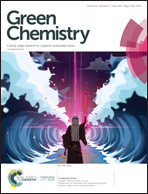Solvent effects in palladium catalysed cross-coupling reactions
Abstract
Palladium catalysed cross-couplings reactions have been a dominant method in synthetic chemistry for decades. Despite this, the role of the solvent is often taken for granted and poorly understood. Regulations affecting some the most frequently used solvents for cross-coupling reactions are accelerating current trends towards using new types of solvents. In this review, the fundamental interactions between solvent and catalyst are explained so that it may inform the rational selection of high performance and safe solvents. The popular cross-coupling methodologies are addressed (Suzuki, Stille, Kumada, Negishi, Hiyama, Heck, Sonogashira, and Buchwald–Hartwig reactions) and novel solvents introduced.



 Please wait while we load your content...
Please wait while we load your content...